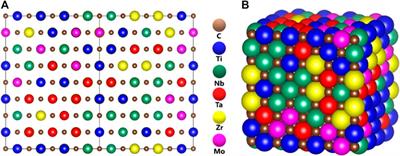EDITORIAL
Published on 19 Apr 2021
Editorial: Data-Driven Integrated Computational Materials Engineering for High-Entropy Materials
doi 10.3389/fmats.2021.664829
- 1,793 views
- 2 citations
8,858
Total downloads
38k
Total views and downloads
EDITORIAL
Published on 19 Apr 2021
REVIEW
Published on 18 Jan 2021

ORIGINAL RESEARCH
Published on 23 Nov 2020

ORIGINAL RESEARCH
Published on 13 Nov 2020

ORIGINAL RESEARCH
Published on 10 Nov 2020

REVIEW
Published on 09 Sep 2020
